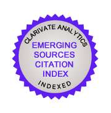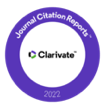La experiencia de la inclusión de arte efímero en Madrid a través de las instituciones regladas. Madrid Abierto, 2004-2011
DOI:
https://doi.org/10.22530/ayc.2013.N3.1.290Resumen
La ciudad de Madrid ha experimentado en los últimos siete años pequeñas transfor-maciones temporales a través de la inserción de actuaciones artísticas urbanas en paralelo a la feria de arte contemporáneo ARCO. A raíz de esta feria surge una interesante iniciativa consistente en trasladar a la calle aquellas reflexiones artísticas más actuales. Comenzando su ubicación en un contexto físico vinculado directamente con la feria se fue trasladando, en principio, a calles representativas de la ciudad de Madrid y desplazándose, a medida que evolucionaba Madrid Abierto hacia barrios menos céntricos. La voluntad de hacer más accesible el arte para los ciudadanos así como la búsqueda de la interacción ciudad-arte fue desencadenando a lo largo de los años la aparición de proyectos cada vez más involucrados con el espacio físico y social de Madrid. La tendencia de la evolución del planteamiento de los proyectos artísticos estaba dirigida claramente hacia la intermediación del artista como agente catalizador de la relación del ciudadano con su ciudad. Las intervenciones pasaron de ser puramente artísticas a tratar de servir como lugar de encuentro y reflexión sobre situaciones urbanas concretas, planteando de una manera más clara la participación del vecino en los proyectos a través del estudio, en algunos casos, de necesidades reales en barrios determinados. El interés de la evolución de los proyectos radica en la posible continuidad de las actuaciones, planteadas, en principio, como efímeras, al tratar de trabajar con el espacio social simultáneamente al espacio físico de los lugares elegidos. La valoración del efecto real de las intervenciones de los últimos años nos plantea la hipótesis de la posibilidad del arte como transformador del espacio público, entendido este como lugar de encuentro y pensamiento colectivo.
Palabras clave: Madrid Abierto.
The experience of the inclusion of ephemeral art in Madrid through regulated institutions. Madrid Abierto, 2004-2011
Abstract
The city of Madrid has experienced in the last seven years small temporary transformations through the inclusion of urban artistic performances in parallel to contemporary art fair ARCO. As a result of the art fair ARCO arises an interesting initiative consisting in moving to the street those more current art reflections. Starting its location in a physical context directly linked to the fair it was moving, in principle, from representative streets of the city of Madrid towards less centrally located neighborhoods. Willing to do more accessible art for citizens as well as the search for the city-art interaction was triggering the emergence of projects increasingly involved with the physical and social space of Madrid over the years. The trend of the evolution of the approach to the artistic projects was clearly directed towards the intermediation of the artist as a catalyst of the relationship of the citizen with his city. The interventions moved from being purely artistic to serve as a place of encounter and reflection on specific urban situations, posing in a clearer way the participation of the neighbor in the projects through the study, in some cases, actual needs in certain neighborhoods. The interest of the evolution of the projects lies in possible continuity of actions, raised, in principle, such as mayflies, trying to work with the social space simultaneously to the physical space of the chosen places. The valuation of the real effect of the interventions of the past few years presents us the hypothesis of the possibility of art as a transformer of the public space, understood as a place of encounter and collective thinking.
Key words: Madrid Abierto.











